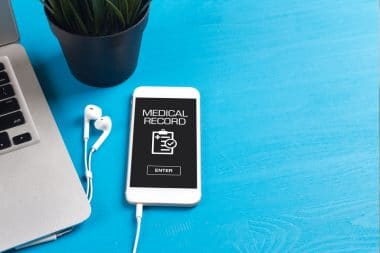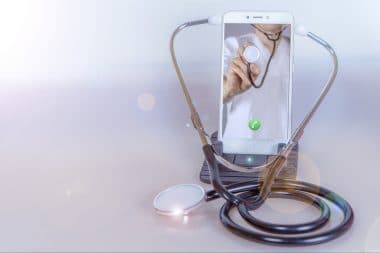To clinicians, nothing is more important than capturing each patient’s narrative. This means recording all actions and observations related to each patient’s care and recovery. It also includes a well-documented medical history to help clinicians determine the best course of action for each patient’s condition.
In addition to getting accurate and updated narratives, clinicians need to easily pull out the data they need whenever they need it. Electronic medical records (EMR) and electronic health records (EHR) streamline these records. But these two are not interchangeable.
EMR and EHR: What’s in a Name?
Although EMR and EHR both deal with electronic records, the slight difference can be significant for clicnical care. Electronic medical records refer solely to the clinician’s documentation of a patient’s diagnosis and treatment.
On the other hand, electronic health records provide more details and insights into a patient’s condition. Health encompasses more factors than the word “medical.” EHR goes beyond standard clinical data. It documents all aspects of a patient’s overall health, wellbeing, and recovery.
How Do Clinicians Use Electronic Medical Records?
Electronic medical records make it easier for clinicians to organize their files. These records serve as a digital substitute to paper documentation of patients’ medical and treatment history. They are more beneficial than paper records in multiple aspects:
- Accurate and Updated Data Tracking
Whereas clinicians used to swim in cabinets of paperwork just to keep track of patient information, EMR simplifies how they update records. EMR also reduces the need to use paper.
- Streamlined Patient Scheduling
Clinicians don’t have to rely on a physical calendar for reminders on patients’ routine checkups and preventive screenings. EMRs can give timely reminders on these schedules.
- Easy Access to Patient Data
EMR eliminates the need to dig through piles of paperwork just to find patient records from two years ago. The digital record helps clinicians locate the information they need in a few clicks.
- Simplicity of Patient Monitoring
It’s easier to monitor patient conditions and track their overall improvement when you can compile all necessary data in one place. This results in personalized and greater quality of care.
One thing that clinicians should take note of is how EMR information doesn’t always travel easily out of the practice. These records might need to be printed out before being physically sent to specialists for review. So while it makes internal documentation paperless, there will still be a need for paper records.
How Do Clinicians Benefit from Electronic Health Records?
Electronic health records are arguably more advanced than electronic medical records. EHR can do all the things that EMR can do. But EHR takes it to the next level by using standard clinical data to provide a comprehensive view of the patient’s health and wellbeing.
EHR is based on the concept that health care is a team effort, and that the success of a team relies on information dissemination.
So EHR compiles data from all authorized clinicians, laboratories, and specialists involved in a patient’s care. This compilation is easily accessible to everyone involved. The technology then, makes way for fully coordinated, patient-centered care:
- Quick Coordination of Patient Services
EHR shares information among authorized health care providers. This makes it easier for clinicians to respond to a patient’s needs especially when the patient is unresponsive.
- Comprehensive Record Tracking
Patients are more motivated to take their medication, undergo tests and therapy, and keep up with lifestyle changes if they can see how their efforts are shaping their lab results over the years.
- Streamlined Lab Test Results
A patient’s authorized clinicians can share patient information via EHR. So if a specialist needs some lab results, for example, they can simply check the records first to avoid duplicate testing.
- Visibility of Clinician’s Notes
EHR simplifies the transition from a patient’s hospital stay to their discharge or their transition to another care setting. It shows all the clinician’s notes, instructions, and follow-up care.
Transparency and streamlined information dissemination aside, EHR automotive clinical workflows. It lets clinicians generate reports and sync information with the practice’s billing system.
EHR software also makes communication easier between patients, clinicians, and medical staff. So at times like these when telemedicine is more relevant than ever, clinicians can hold telehealth sessions and prescribe medications without the need for patients to physically visit the practice.
Which Electronic Record Software Do Most Clinicians Choose?
EMR digitizes patient records, and EHR streamlines digital records across all authorized clinicians. The words “medical” and “health” are almost always linked with each other. But in the case of electronic records, these words make a world of difference.
No matter the difference, however, clinicians still use both EMR and EHR to deliver better patient care. Given the coronavirus pandemic and social distancing measures, we can see how EHR implementation is more relevant than ever in providing remote health care services.








Reply